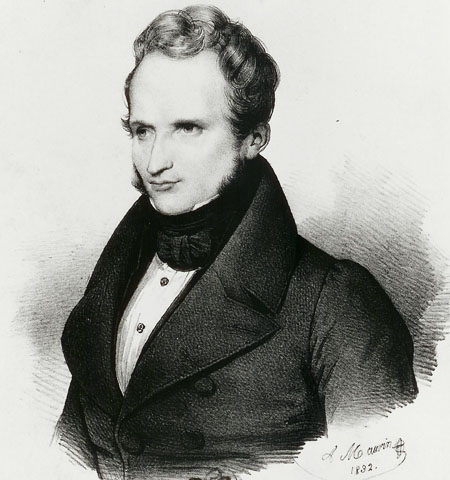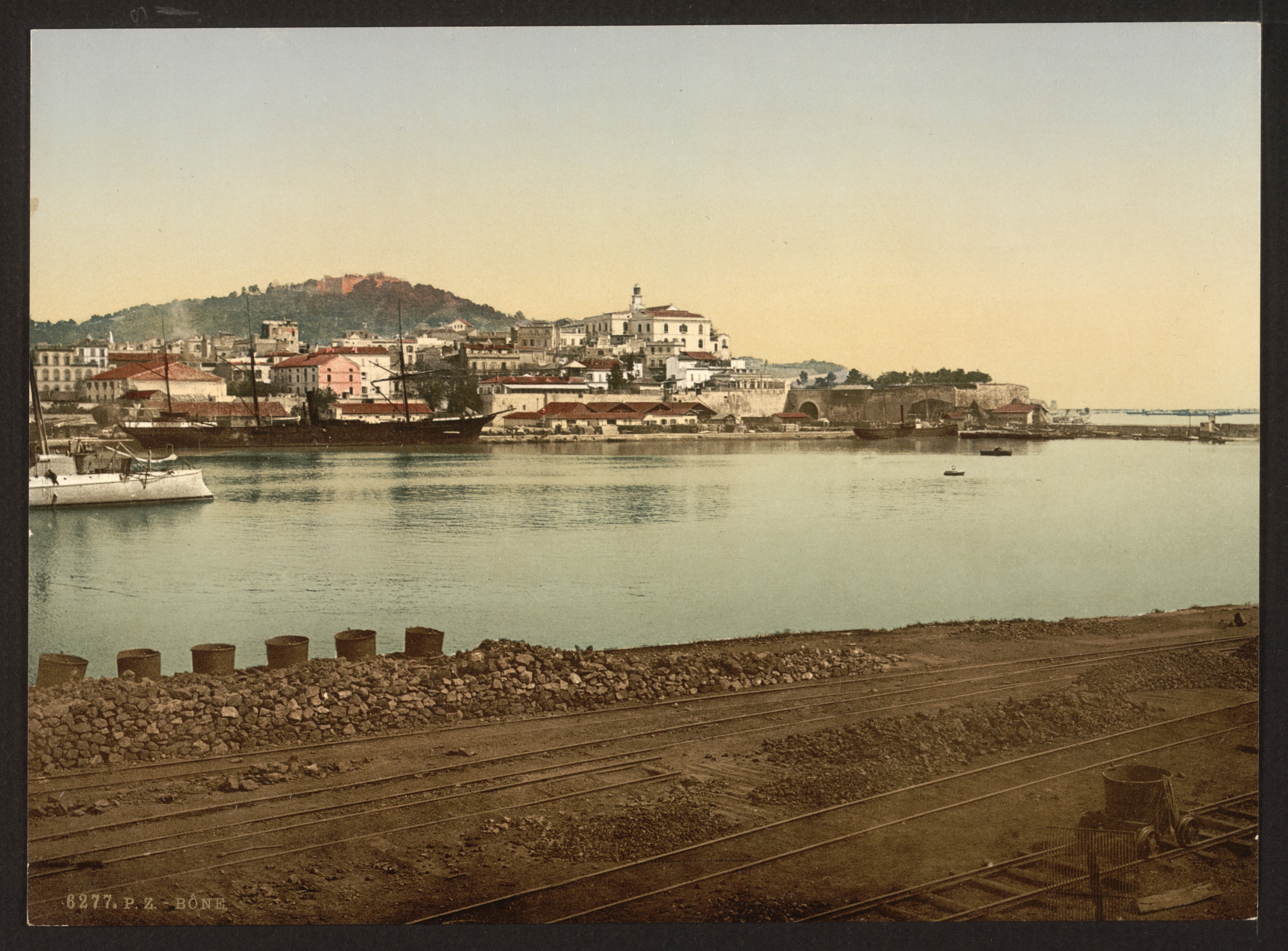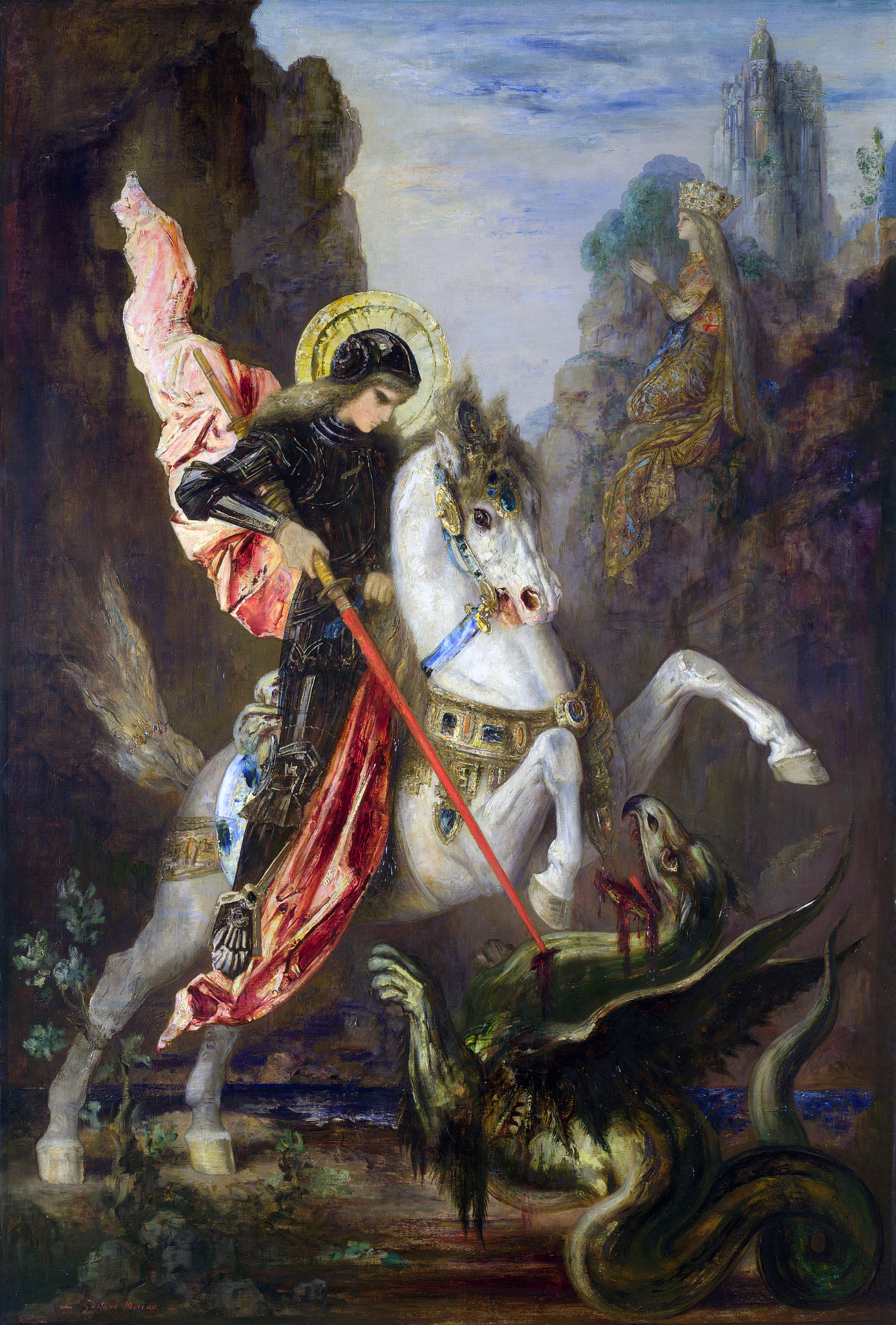|
Oued Zenati
Oued Zenati is a town and commune in Guelma Province, Algeria. According to the 1998 census it had a population of 27,254 which progressed to reach 55,000 in 2010. History During the Numidian era (399BC-50BC), the region was highly cultivated and protected by military points spread all over the place, still present today. The town's Early African Christian history is portrayed in the Eloa status in the town agora. Eloa, the angel of sorrow and compassion in Christian Mythology is said to have been born from a tear Jesus shed. In Alfred de Vigny's poem Eloa, we find Jesus at Lazarus' grave. He is deeply moved by the grief of Martha and Mary after losing their brother. So he sheds one heavenly tear, and Eloa is born. Geography It is located 40 km (to the West) from Guelma, 110 km of Annaba and 70 km from Constantine. Oued Zenati is also the name of a river in the commune. The village has an agricultural vocation, very poor industrially. Related people * ... [...More Info...] [...Related Items...] OR: [Wikipedia] [Google] [Baidu] |
Provinces Of Algeria
Algeria, since December 18, 2019, is divided into 58 wilaya, wilayas (province, provinces). Prior to December 18, 2019, there were 48 provinces. The 58 provinces are divided into 1,541 baladiyahs (Municipalities of Algeria, municipalities). The name of a province is always that of its capital city. According to the Algerian constitution, a wilaya is a territorial collectivity enjoying economic and diplomatic freedom, the APW, or ''"Popular Provincial Parliament/Provincial Popular Parliament"'' (the ''Assemblée Populaire Wilayale'', in French) is the political entity governing a province, directed by the "Wali (administrative title), Wali" (Governor), who is chosen by the Algerian President to handle the APW's decisions, the APW has also a president, who is elected by the members of the APW, which Algerians elect. List By 1984 the number of Algerian provinces were fixed at 48 and established the list of municipalities or "communes" attached to each province. In 2019, 10 new pr ... [...More Info...] [...Related Items...] OR: [Wikipedia] [Google] [Baidu] |
Alfred De Vigny
Alfred Victor, Comte de Vigny (27 March 1797 – 17 September 1863) was a French poet and early French Romanticist. He also produced novels, plays, and translations of Shakespeare. Biography Vigny was born in Loches (a town to which he never returned) to an aristocratic family. His father was a 60-year-old veteran of the Seven Years' War who died before Vigny's 20th birthday; his mother, 20 years younger, was a strong-willed woman who was inspired by Rousseau and took personal responsibility for Vigny's early education. His maternal grandfather, the Marquis de Baraudin, had served as commodore with the royal navy. Vigny grew up in Paris, and attended preparatory studies for the École Polytechnique at the Lycée Bonaparte, obtaining a good knowledge of French history and the Bible before developing an "inordinate love for the glory of bearing arms". As was the case for every noble family, the French Revolution diminished the family's circumstances considerably. After Napoléon' ... [...More Info...] [...Related Items...] OR: [Wikipedia] [Google] [Baidu] |
Constantine, Algeria
Constantine ( ar, قسنطينة '), also spelled Qacentina or Kasantina, is the capital of Constantine Province in northeastern Algeria. During Roman Empire, Roman times it was called Cirta and was renamed "Constantina" in honor of emperor Constantine the Great. It was the capital of the French department of Constantine (département), Constantine until 1962. Located somewhat inland, Constantine is about from the Mediterranean Sea, Mediterranean coast, on the banks of the Rhumel River. Constantine is regarded as the capital of eastern Algeria and the commercial center of its region, and it has a population of about 450,000 (938,475Office National des Statistiques, Recensement General de la Population et de l’Habitat 2008 2008 population census. Accessed on ... [...More Info...] [...Related Items...] OR: [Wikipedia] [Google] [Baidu] |
Annaba
Annaba ( ar, عنّابة, "Place of the Jujubes"; ber, Aânavaen), formerly known as Bon, Bona and Bône, is a seaport city in the northeastern corner of Algeria, close to the border with Tunisia. Annaba is near the small Seybouse River and is in the Annaba Province. With a population of about 464,740 (2019) and 1,000,000 for the metropole, Annaba is the third-largest city and the leading industrial center in Algeria. Annaba is a coastal city that underwent significant growth during the 20th century. Annaba has a metropolitan area with a higher population density than the other metropolitan areas of the Algerian coastline, such as Oran and Algiers. Much of eastern and southern Algeria uses the services, equipment and infrastructure of Annaba. Economically, it is the centre for various economic activities, such as industry, transportation, finance, and tourism. Names Present-day Annaba grew up on the site of Aphrodisium, the seaport of the Roman city . (The modern city ... [...More Info...] [...Related Items...] OR: [Wikipedia] [Google] [Baidu] |
Guelma
Guelma ( ar, قالمة ''Qālima''; arq, ڨالمة; Algerian pronunciation: ) is the capital of Guelma Province and Guelma District, located in north-eastern Algeria, about 65 kilometers from the Mediterranean coast. Its location corresponds to that of ancient Calama. History Antiquity Though Guelma was settled from early prehistory, it was first established as a town under the Phoenicians, who called it ''Malaca'', probably a Phoenician word meaning "salt" (sharing a common etymology with ''Málaga'' in Spain). Later, the Romans settled the area and renamed it '' Calama'', part of the Roman province of Numidia. Calama prospered during the rise of Christianity; Saint Possidius was bishop of Guelma during the 5th century. Later, the Vandal invasion devastated the area until the coming of the Byzantines, who settled the area and built city walls to protect it from further invasions. It was located in the Byzantine Exarchate of Africa. However, after the successful Islam ... [...More Info...] [...Related Items...] OR: [Wikipedia] [Google] [Baidu] |
Mary Of Bethany
Mary of Bethany is a biblical figure mentioned only by name in the Gospel of John in the Christian New Testament. Together with her siblings Lazarus and Martha, she is described by John as living in the village of Bethany, a small village in Judaea to the south of the Mount of Olives near Jerusalem. Medieval Western Christianity identified Mary of Bethany with Mary Magdalene and with the sinful woman of , very common for that time period. This influenced the Roman Rite liturgy of the feast of Mary Magdalene, with a Gospel reading about the sinful woman and a collect referring to Mary of Bethany. Since the 1969 revision of that liturgy, Mary Magdalene's feast day continues to be on 22 July, but Mary of Bethany is celebrated, together with her brother Lazarus, on 29 July, the memorial of their sister Martha.''Martyrologium Romanum'' (Libreria Editrice Vaticana 2001 ), pp. 383, 398 In Eastern Christianity and some Protestant traditions, Mary of Bethany and Mary Magdalene are conside ... [...More Info...] [...Related Items...] OR: [Wikipedia] [Google] [Baidu] |
Martha
Martha (Hebrew: מָרְתָא) is a biblical figure described in the Gospels of Luke and John. Together with her siblings Lazarus and Mary of Bethany, she is described as living in the village of Bethany near Jerusalem. She was witness to Jesus resurrecting her brother, Lazarus. Etymology of the name The name ''Martha'' is a Latin transliteration of the Koine Greek Μάρθα, itself a translation of the Aramaic מָרְתָא ''Mârtâ,'' "the mistress" or "the lady", from מרה "mistress," feminine of מר "master." The Aramaic form occurs in a Nabatean inscription found at Puteoli, and now in the Naples Museum; it is dated AD 5 (Corpus Inscr. Semit., 158); also in a Palmyrene inscription, where the Greek translation has the form ''Marthein.'' Pope, Hugh"St. Martha" The Catholic Encyclopedia. Vol. 9. New York: Robert Appleton Company, 1919. Biblical references In the Gospel of Luke, Jesus visits the home of two sisters named Mary and Martha. The two sisters ar ... [...More Info...] [...Related Items...] OR: [Wikipedia] [Google] [Baidu] |
Éloa, Ou La Sœur Des Anges
''Éloa, ou La sœur des anges'' (''Éloa, or the Sister of the Angels''), published in 1824 (see 1824 in poetry), is Alfred de Vigny's tripartite philosophic epic poem of Eloa, an innocent angel who falls in love with a stranger at odds with God. It is made clear that the stranger is Lucifer Lucifer is one of various figures in folklore associated with the planet Venus. The entity's name was subsequently absorbed into Christianity as a name for the devil. Modern scholarship generally translates the term in the relevant Bible passa .... He falls in love with the girl, but his own twisted notions of love prohibit him from returning the girl's affection in a proper way. In the end, the girl is unable to help Lucifer and he drags her to hell with him. Even as she is falling, she does not know who he is until he tells her his name. A translation into English by Alan D. Corré is available on Kindle; it includes the French text. Further reading * Gruber, Lucretia S. (1976). ... [...More Info...] [...Related Items...] OR: [Wikipedia] [Google] [Baidu] |
Jesus
Jesus, likely from he, יֵשׁוּעַ, translit=Yēšūaʿ, label=Hebrew/Aramaic ( AD 30 or 33), also referred to as Jesus Christ or Jesus of Nazareth (among other names and titles), was a first-century Jewish preacher and religious leader; he is the central figure of Christianity, the world's largest religion. Most Christians believe he is the incarnation of God the Son and the awaited Messiah (the Christ) prophesied in the Hebrew Bible. Virtually all modern scholars of antiquity agree that Jesus existed historically. Research into the historical Jesus has yielded some uncertainty on the historical reliability of the Gospels and on how closely the Jesus portrayed in the New Testament reflects the historical Jesus, as the only detailed records of Jesus' life are contained in the Gospels. Jesus was a Galilean Jew who was circumcised, was baptized by John the Baptist, began his own ministry and was often referred to as "rabbi". Jesus debated with fellow Jews on ho ... [...More Info...] [...Related Items...] OR: [Wikipedia] [Google] [Baidu] |
Guelma Province
Guelma Province ( ar, ولاية قالمة) is a province (''wilaya'') in eastern Algeria. Its namesake is its seat and most populous municipality: Guelma. History Its civilians suffered heavy casualties during the 1945 Sétif massacre by the French Army. The province itself was established in 1974. Before that, it was part of Annaba Province. In 1984 El Taref Province and Souk Ahras Province were carved out of its territory. Demographics It has 429,998 inhabitants as of the 1998 census, one of the lower populations in the country, which gives it 39 seats in the APW, the province's assembly. The population density is . Of these, 54.4% live in urban areas and 87% have access to safe drinking water, lower than the national average of 89%. Of the active population of the province, 23.3% work in agriculture, 17.9% in constructions, 9.9% in industry, and 48.9% in the services sector. 21.1% of the population is unemployedbr> Geography The territory of the province () is mainly compo ... [...More Info...] [...Related Items...] OR: [Wikipedia] [Google] [Baidu] |
Christian Mythology
Christian mythology is the body of myths associated with Christianity. The term encompasses a broad variety of legends and narratives, especially those considered sacred narratives. Mythological themes and elements occur throughout Christian literature, including recurring myths such as ascending to a mountain, the ''axis mundi'', myths of combat, descent into the Underworld, accounts of a dying-and-rising god, a flood myth, stories about the founding of a tribe or city, and myths about great heroes (or saints) of the past, paradises, and self-sacrifice. Various authors have also used it to refer to other mythological and allegorical elements found in the Bible, such as the story of the Leviathan. The term has been applied to myths and legends from the Middle Ages, such as the story of Saint George and the Dragon, the stories of King Arthur and his Knights of the Round Table, and the legends of the ''Parsival''. Multiple commentators have classified John Milton's epic poe ... [...More Info...] [...Related Items...] OR: [Wikipedia] [Google] [Baidu] |
Early Christian
Early Christianity (up to the First Council of Nicaea in 325) spread from the Levant, across the Roman Empire, and beyond. Originally, this progression was closely connected to already established Jewish centers in the Holy Land and the Jewish diaspora. The first followers of Christianity were Jews or proselytes, commonly referred to as Jewish Christians and God-fearers. The Apostolic sees claim to have been founded by one or more of the apostles of Jesus, who are said to have dispersed from Jerusalem sometime after the crucifixion of Jesus, c. 26–36, perhaps following the Great Commission. Early Christians gathered in small private homes, known as house churches, but a city's whole Christian community would also be called a church – the Greek noun ἐκκλησία (''ekklesia'') literally means assembly, gathering, or congregation but is translated as church in most English translations of the New Testament. Many early Christians were merchants and others who had pract ... [...More Info...] [...Related Items...] OR: [Wikipedia] [Google] [Baidu] |





